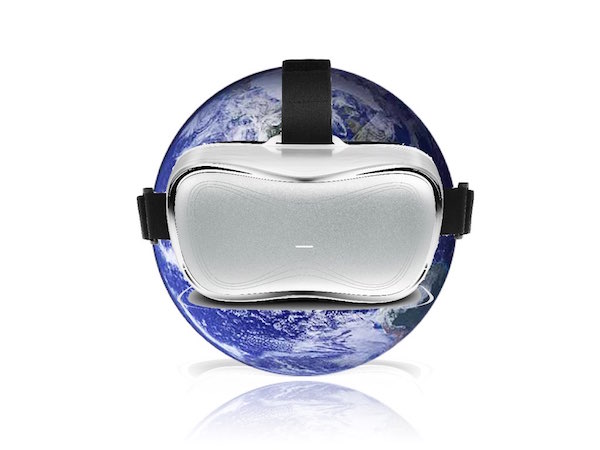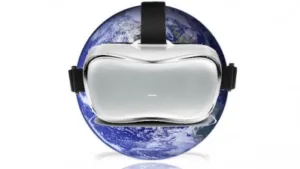While AR and VR are tow of my favorite topics in the display industry right now, I want to add some of my views to the current industry landscape. This article looks at the market and market forecasts that exist today. We should be careful in assessing the current market size as well as the predictions going forward.

All of this is discussed in the media on an almost daily basis; market research groups you have never heard of are publishing reports on the great market growth we have ahead of us. Market size forecasts are best described with the phrase, ‘the sky is the limit’. With a lot of early investment money flowing into this field, the various start up companies cannot eat up these reports fast enough, as they need them to convince the investors to add substantially to that seed money of a few millions. I am not trying to paint the AR / VR market as a trap for investors, instead I believe that the money being invested in these fields is very little compared to the task of developing a complete new technology.
In certain areas, we are still at the level of material research and very basic development. On the other end, we are already trying to sell devices to consumers in the hope that what we can do today is good enough to be a hit. While everyone seems to be impressed when he puts on a AR / VR headset for the first time, not so many are seeing this experience as a reason for buying a headset the next day or week. Maybe in a year or so, but not today.
As a consequence, the players developing such devices are addressing niches in the hope of finding an application that allows them to sell more headsets. This is important to show their investors that they are on the right path to selling more components. These niches are industrial applications, education, field service, gaming and now also adult entertainment. The latter one has been a driver for the display industry for some time and I believe that many companies are watching this very carefully to see the ‘market adoption’ in this specific industry.
When we look at the tens of billions of dollars these and other fields will create in the not so far future ($117 billion for AR and $34 billion for VR by 2022) nobody seems to ask what this really means? This particular data set comes from the “Augmented Reality and Virtual Reality Market” published by Market and Markets*. Putting on my display industry glasses I have to ask what does this really mean for the display fabs around the world?
This is where the story becomes ‘a bit murky’. After the initial uptake, sales of VR headsets were much less than expected and, as a consequence, market researchers started to include the complete VR industry including hardware, software, content and advertising, for good measure. The quoted report includes HMDs, HUDs, Handheld Devices, Gesture Tracking, Projectors and Display Walls, as well as components like Sensors, Displays, Cameras and Software. So by no means will these numbers even remotely describe what is in it for the display makers. This is typical for consumer electronic devices; forecast are for the ecosystem or device not just for one component. This also true in the smartphone market, with the exception that the smartphone numbers translate into a much more significant display market. In addition, smartphone market forecasts typically do not include software and content in the market numbers.
 VR Takes over the World
VR Takes over the World
The latest news is the explosion that the AR industry is expected to see after the coming iOS 11 and the new iPhone 8 will support AR, as we described in the last week. As far I can tell, we are talking about using a smartphone and tablet as a peephole into the AR and VR world. This AR market explosion will do nothing for the display industry unless you now redefine every smartphone and tablet as an AR / VR device. Taking this view, the AR / VR market will soon surpass the smartphone and tablet market.
You see where I am heading with this? We are experiencing some serious market spin that has no footing in reality.
This is my very rough estimate of the market and market potential of the AR / VR hardware market. Let’s assume that in 2017 we will be selling one or two million VR headsets (AR may not be in the market at all) we are looking at a device market size of about four hundred million dollars at best. Doubling this every year (analysts are forecasting less than 100% CAGR for the next 5 years) would get us to $10 billion for the hardware alone in 2022. This number is in my opinion the upper ceiling for global hardware sales and will be much smaller in reality. This means my best estimate is few billion dollars for the hardware alone.
So how does this number compare with others in the display industry?
Another report from Market and Markets, “Interactive Kiosks Market by Type (ATMs, Self Service Kiosks, and Vending Machines)“, shows this market as reaching $73 billion in hardware sales by 2020. Hello, we are talking about interactive kiosks here, hardly the hottest market in the display industry to start with. Maybe we should start writing more about interactive kiosks and less about AR / VR. But where would be the fun in that? Just increasing sales numbers of run of the mill displays and no exciting new architectures and technologies. I think I will stick with AR and VR and just forget about the market forecasts, the technology is interesting enough. (NH)
* Markets and Markets puts out a lot of reports, but we do not routinely report their numbers in our subscriber newsletters. Man. Ed.

